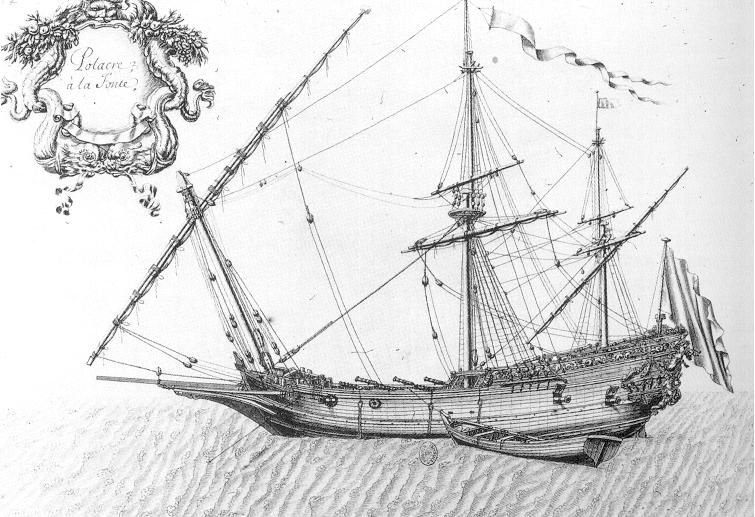Here, my friends, is the first installment of "Aubrey-Maturin in Brief." This is yet another in Lou's series of "I Write About It So I Can Think About It, Then I'll Share It" posts. In short, as I started rereading O'Brian's books from the beginning, I kept notes as I went. These notes, by no original design, led to a chapter-by-chapter condensation of the plot. For those of you who have not read O'Brian, these may serve to get you interested, although out of completeness I will warn that there ARE SPOILERS. For those of who who have read O'Brian, I hope you may find these either a nice trip through pleasant memories or a tool for keeping track of the Captain and the Doctor.
The first book, like in any first in a series, originally stood alone but can now be seen as an introduction. First and foremost, we are introduced to the protagonists, who I will brazenly describe as the Kirk and Spock of the British Navy. Maturin himself describes Jack Aubrey as a "pirate:" lusty, impetuous, driven. Dr. Stephen Maturin is both passionate and scientific, a man of knowledge and of mystery. These two are both complementary and polar. Aubrey represents war and discipline, while Maturin represents both humanitarianism and naturalismism. The relationship is that of two sparring compatriots that always end up back on good terms. In essence, they personify Britain itself at the time: Politics and combat, the tension between progress and tradition, will still be ironed out by gentlemanly code.
We are also introduced, very carefully and methodically, to the British Navy and life at sea. This is done in four ways. The first is via Aubrey, with whom we are thrown straight into Naval life as he assumes his first (titular) command. The second is via Maturin, whose ignorance of the ways of the sailor and of nautical terminology serves as both a means for the author to educate the reader and an ongoing source of humor. This relates to the third means, as Maturin is as frequently taught by Aubrey as he is by a recurring set of characters such as Pullings and Mowett, both of whom among others are introduced in this book. The fourth and most dramatic means is by O'Brian's detailed descriptions of Naval tactics and combat. There are many actions in this first book, leading to the climactic battle with the Cacafuego. O'Brian ends the book very wisely by putting it all into larger context with the Battle of Algeciras Bay, a battle involving some 18 ships near Gibraltar.
Master and Commander, however, can stand on its own and is more than just a first chapter in the Aubrey-Maturin epic. There are two marvelous subplots that both serve both an introductory function and make this a distinct book in the series. The first is Aubrey's increasingly public affair with the wife of the Commandant of Port Mahon. The second is the tense relationship between Maturin and Lieutenant Dillon, who knew each other as part of the Irish Rebellion of 1798 but now both serve the Empire. But enough premable. This is the book that will hook you on O'Brian (or not). It happened like this...
 |
| "Third-Rate Entering Port Mahon," from the National Maritime Museum in Greenwich |
(1) 1800, The Napoleonic Wars, the British port of Minorca . Jack Aubrey, a Lieutenant in the Navy, attends a concert at the Governor’s House. There he encounters Stephen Maturin, who nudges him for keeping time to the music, a gesture Aubrey considers an offense. When the music is over, they issue a full challenge to each other. Fortunately, Aubrey, who has been without an assignment for some time, receives orders to become master and commander of the brig HMS Sophie. His spirits raised by receiving his epaulette, he meets Maturin Mahon
 |
| Lieutenant's frock from the Regence era |
(3) The Sophie sails as escort to a convoy. As Aubrey becomes more familiar with his ship and crew, Maturin Maturin
 |
| "An Algerine Ship Off A Barbary Port," again from the National Maritime Museum |
(4) Maturin Maturin Cape Nao , which means he now can take prizes.
(5) Sophie begins her cruise in gale conditions. They come across a felucca but avoid her because she is a plague ship—which disappoints Maturin Maturin
 |
| A French polacre-xebec |
(6) Sophie returns to Mahon Maturin attend a party at the Hartes, and Maturin
| Cap de la Nau, Spain |
(7) Affairs are going well aboard the Sophie. They sail as far as Cape Nao Cape Almoraira Maturin
(8) The Sophie is no longer a content place. When they pick up Maturin Mahon
(9) Sophie sails the width of the Mediterranean . They encounter the French frigate Dédaigneuse, and Aubrey allows the little Sophie to escape the large frigate by using a raft with lamps to mimic his ship at night. Back at Mahon
(10) Resuming their cruise, the crew of the Sophie keeps its reputation for prize taking but yearns for real battle. It comes soon enough. After taking a tartan off the coast, gunboats come out from Maturin play music in the Captain’s cabin, and later Maturin
(11) Back in Mahon Malta
 |
| The Battle of Algeciras |
(12) Captive aboard the French ship Desaix, Aubrey and Maturin Gibraltar in exchange for French prisoners. Aubrey, Maturin


No comments:
Post a Comment